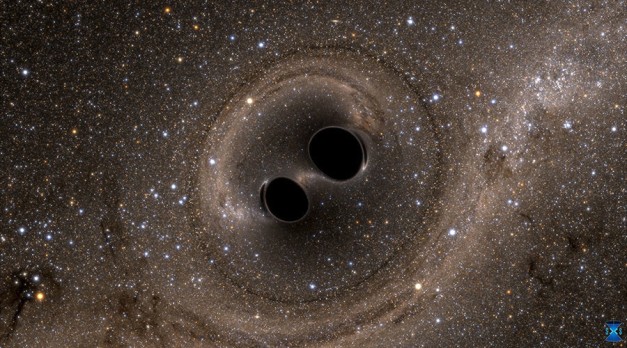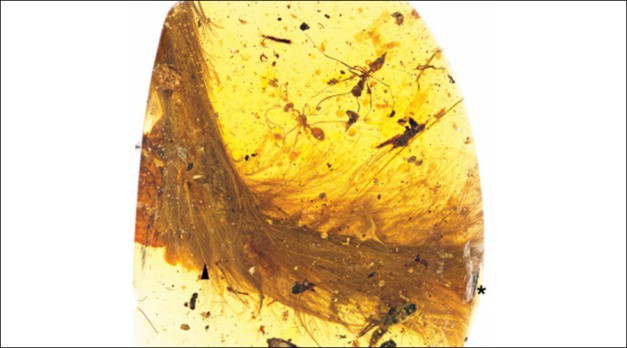The 7 greatest scientific breakthroughs of 2016
Posted by Lou on January 1, 2017From the discovery of an Earth-like planet to the unraveling of one of the great mysteries of physics, 2016 has been a blockbuster year for scientific breakthroughs.
Source: The 7 greatest scientific breakthroughs of 2016 — RT Viral
RT Viral
Published time: 1 Jan, 2017
© The SXS Project / Reuters
From the discovery of an Earth-like planet to the unraveling of one of the great mysteries of physics, 2016 has been a blockbuster year for scientific breakthroughs.
Gravitational waves
Perhaps the biggest scientific feat of 2016 was the detection of gravitational waves in the fabric of space-time, from a pair of colliding black holes. The development added more weight to Albert Einstein’s theory of relativity.
The researchers backed up their findings by repeating the feat a few months later. The discovery was named Physics World Breakthrough of the Year and is hotly tipped to earn a Nobel Prize.
READ MORE: ‘New era of astronomy’: Gravitational waves detected for 2nd time, backing up theory of relativity
The possible existence of the waves had been one of the biggest mysteries of physics over the past century and was predicted by Einstein in 1916. Their first detection was announced in February 2016.
https://youtu.be/zLAmF0H-FTM
In the collisions studied, the two black holes had many times the mass of the sun and emitted the waves as they spiraled into one another and eventually collided. In the moment of collision, the black holes reportedly released 50 times more energy than all the stars from all the galaxies in the universe were releasing combined.
Earth-like planet Proxima b
In August, years of scientific research culminated in the confirmation of the existence of a potentially habitable planet orbiting the star closest to our sun.
Named ‘Proxima b’, the planet lies in the ‘habitable zone’ of the star Proxima Centauri, a mere 4.2 light years away from Earth. It could potentially sustain life – even future human habitation.
READ MORE: Home from home: Scientists may have discovered an Earth-like planet with water
However, don’t pack your bags just yet: with current technology, it would take around 137,000 years to reach the planet.
https://youtu.be/HWdQHI4nZho
Researchers found that Proxima b, which is 1.3 times the size of Earth, could hold water as it is far enough away from its star for liquid to not be gaseous, but not too distant for it to be frozen. It was also found that the planet may be covered in oceans.
The discovery lays the groundwork for further exploration and studies to determine the planet’s habitability.
‘First of its kind’ dinosaur discovered
The tail of a 99-million-year-old dinosaur, complete with feathers, bones and soft tissue, was found preserved in amber in Myanmar in December.
The extraordinary finding is made even more remarkable by the fact that it was discovered by chance, in a market.
READ MORE: ‘1st of its kind’: 99 million-year-old feathered dinosaur tail discovered in Myanmar
Researchers say that the tail belonged to a young coelurosaur they nicknamed ‘Eva’, whose feathery tail became stuck in tree resin around 99 million years ago, when the dinosaur was about the size of a sparrow. Had the coelurosaur reached adulthood, it would have grown to be slightly smaller than an ostrich.

© 2016 Elsevier Ltd. / cell.com
It’s the first time that feathers and skeletal material from a dinosaur have been found in amber.
Paleontologist Ryan McKellar said the finding is a “spectacular little glimpse” that provides scientists with a “pathway that gets us to modern feathers” – a particularly useful development as theories on how feathers evolved have long been debated among evolutionary scientists.
Four new elements named on Periodic Table
Four brand new elements were given names on the Periodic Table (yes, your science textbook is now out of date).
Russian, American and Japanese scientists were behind the new additions, called Nihonium, Moscovium, Tennessine and Oganesson.
READ MORE: 4 brand new elements discovered by Russian, Japanese & US researchers
They are the 113th, 115th, 117th and 118th elements on the table, filling out the seventh row. These were the first additions to the table since 2011, when two elements were added.
The new elements, which are all synthetic, were discovered by smashing very light nuclei into each other and tracking the elements left behind in the aftermath.
Scientists first synthesized the new elements between 2002 and 2010 and they were added to the table at the very end of 2015. Their new names weren’t approved until the late November.
Juno spacecraft reached Jupiter
NASA’s Juno spacecraft made record-breaking close contact with Jupiter this year. In July, the spacecraft came within 2,600 miles (4,200km) of the largest planet in the solar system, cruising by at a speed of 130,000 miles per hour (208,000kph).
READ MORE: NASA’s Juno spacecraft makes first close flyby of Jupiter
Juno, launched in 2011, is the first man-made object to orbit the giant planet since the end of the Galileo mission in 2003.
The solar-powered craft is designed to study Jupiter’s structure and intense magnetic field.
Scientists hope to shed light on how much water is in the planet’s atmosphere.
https://youtu.be/p39pERjIqAg
“What Juno’s about is looking beneath that surface… We’ve got to go down and look at what’s inside, see how it’s built, how deep these features go, learn about its real secrets,” Scott Bolton, the principal investigator for Juno with the Southwest Research Institute said.
The key to longevity?
A study found that getting rid of cells that no longer divide could be the key to human longevity.
Scientists at the Mayo Clinic found that cells which no longer divide inside our bodies, known as ‘senescent cells’, are linked to diseases of old age, such as kidney failure and type-2 diabetes.
Disposing of ‘cellular litter’ could prolong life by up to 35% – study
The procedure increased the lifespan of mice by 17 to 35 percent. The drug also delayed the formation of tumors and reduced age-related deterioration of several organs. In addition, the mice looked healthier and had lower levels of inflammation in fat, muscle and kidney tissue.
A number of pharmaceutical companies are already working on developing drugs aimed at disposing of cellular waste.
Mice created in petri dish
In October, reproductive experts hailed a breakthrough as scientists successfully developed living mice from lab-created eggs.
Japanese scientists reprogrammed mouse tail cells as stem cells and turned them into eggs in a petri dish. The eggs were then fertilized and the embryos implanted in female mice, which went on to give birth to 11 healthy pups.
READ MORE: Artificial eggs grown in science lab create living mice
Should the method work in humans, it could provide a new method of treating infertility. The technique could also allow same-sex couples to produce biological offspring.
“Although we are a long way from making artificial eggs for women at the moment, this study also provides us with a basis for experimental models to explore how eggs develop from other species, including in women,” the University of Edinburgh’s Richard Anderson said.
Thanks to Lou at: https://talesfromtheloublog.wordpress.com






 Sat Mar 23, 2024 11:33 pm by globalturbo
Sat Mar 23, 2024 11:33 pm by globalturbo

